Kruger National Park is one of the greatest wildlife adventures that you can experience today. Spanning nearly five million acres in South Africa, this incredible park is home to thousands of diverse animals, including Africa’s “Big Five”. Let’s take a look at some of the incredible animals that roam Kruger National Park!
Lion (Panthera leo)

Lions are the most social cats in Africa and live together in bonded communities called prides.
©iStock.com/MaggyMeyer
Many people come to Africa to see the “King of the Jungle” and fortunately for them, over 1,500 lions live in Kruger National Park! Lions may be the largest of Africa’s big cats, but they are surprisingly tricky to spot. With light yellow-brown coloring, lions seem to disappear into the tall grass, especially when they lie down for a nice cat nap. These enormous carnivores are surprisingly good at hiding, but if you’re lucky you might spot them sleeping under a tree, drinking from a waterhole, or even actively hunting their prey.
Leopard (Panthera pardus)
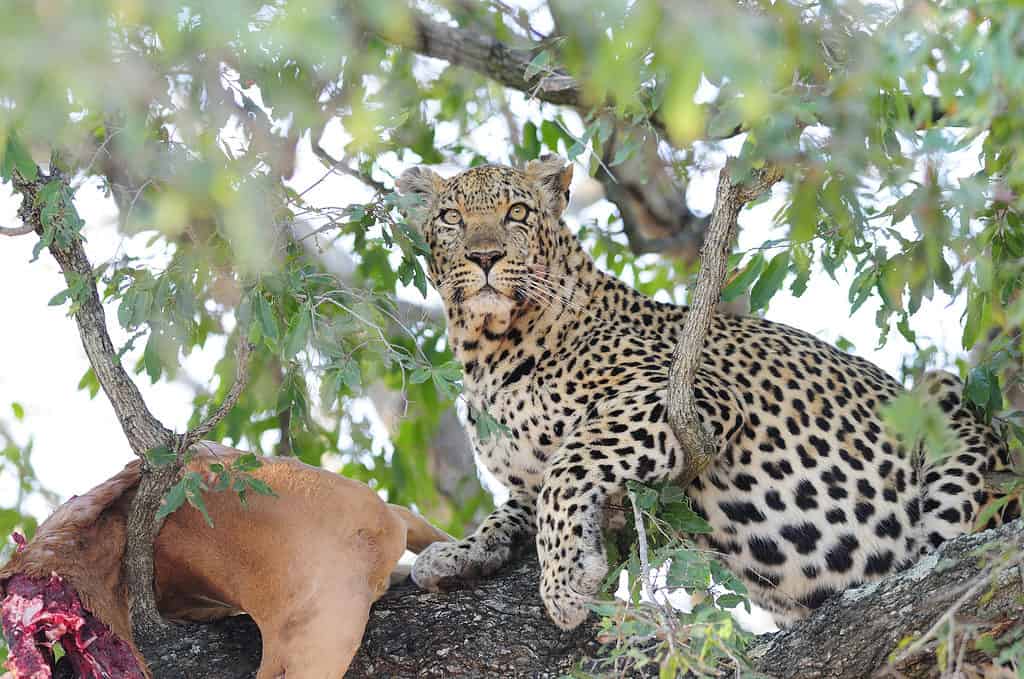
Leopards are the least social wild cats in
Africa
.
©iStock.com/RichLindie
Leopards are graceful creatures with stunning fur coats covered in elegant rosette patterns. Unlike lions, they move silently, using stealth and surprise to ambush their prey. Leopards often drape their bodies over a large branch high up in a tree, sleeping throughout the day and sometimes dropping down to attack unsuspecting prey below.
White Rhinoceros (Ceratotherium simum)
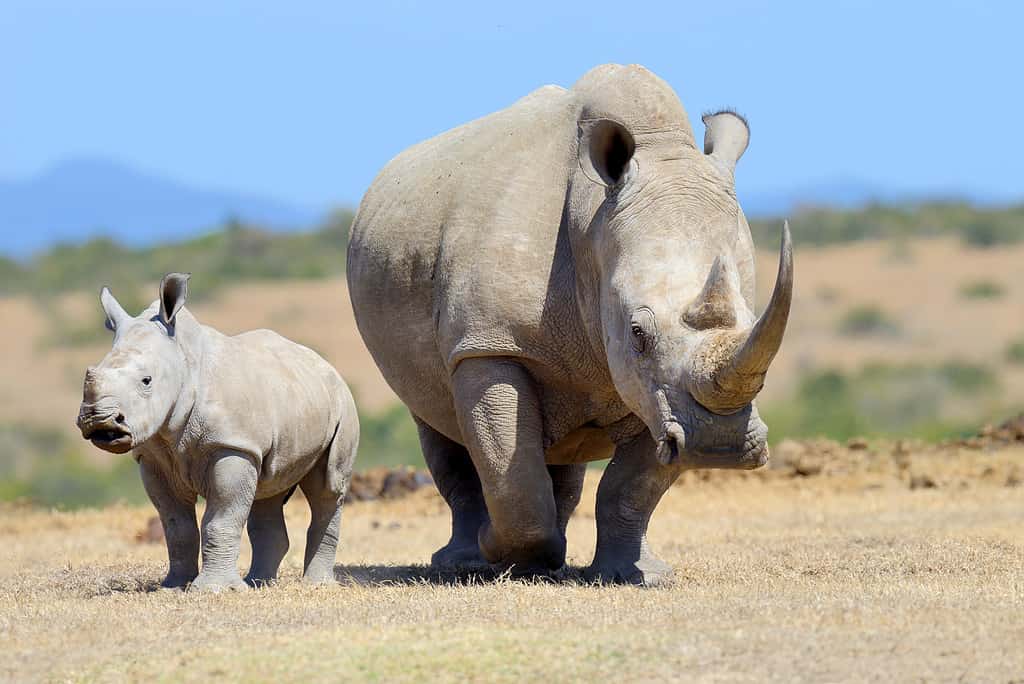
Populations of white rhinos have dramatically decreased due to poaching.
©Volodymyr Burdiak/Shutterstock.com
Both white and black rhinoceroses live within the borders of Kruger National Park. The white rhino, however, is the larger of the two species, weighing between 3,080 and 79,000 pounds. In Kruger National Park, white rhinos often spend time near the Sabie and Crocodile Rivers. When the weather gets too hot, they enjoy napping in the shade or wallowing in mud. White rhinos get their name from the term “weit”, which means “wide”. This refers to the animal’s mouth, which is wide and square-shaped.
Black Rhinoceros (Diceros bicornis)
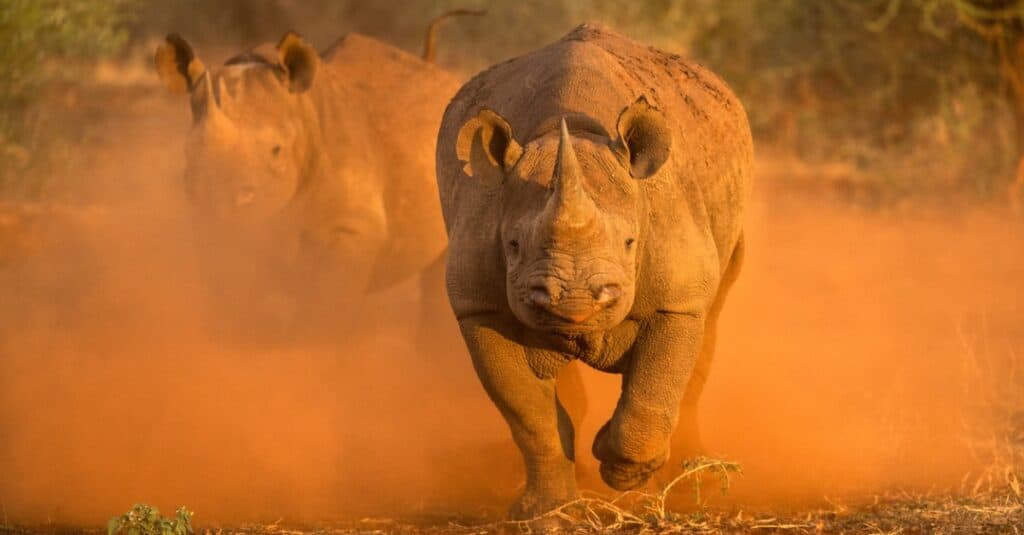
Black rhinos are more common in dense bush and around thorny thickets.
©iStock.com/Udo Kieslich
In contrast to the wide snout of the white rhino, black rhinos have a hooked upper lip. In addition, black rhinos are also smaller, weighing around 1,750 to 3,080 pounds. In Kruger National Park they often spend time in the southern regions between Skukuza and Pretoriuskop.
African Elephant (Loxodonta africana)
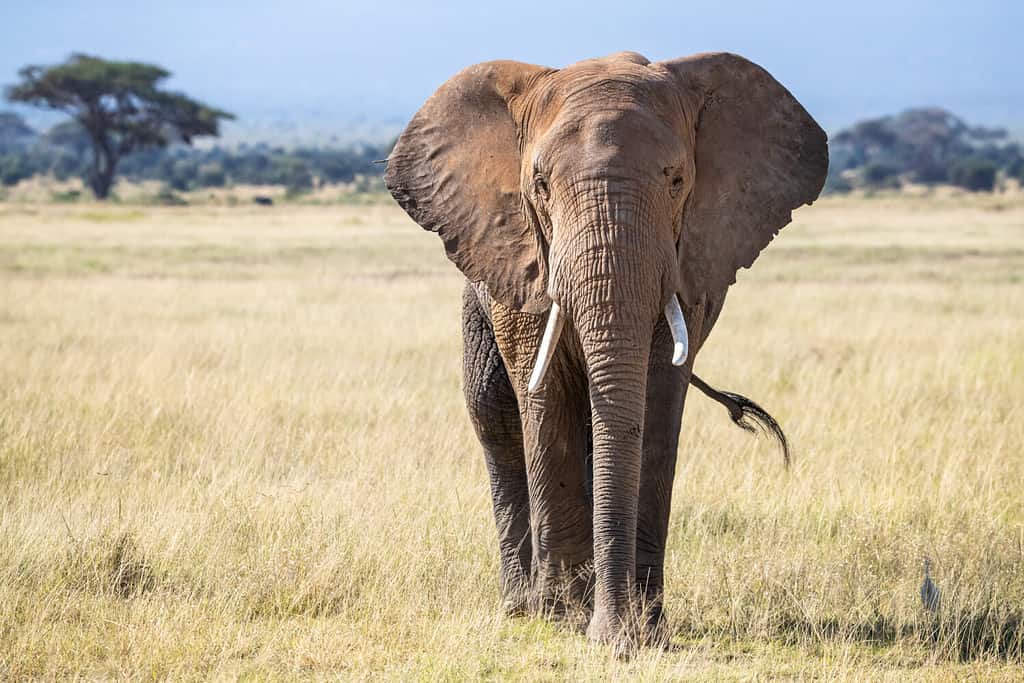
African bush elephants can weigh up to 10 tons.
©Jane Rix/Shutterstock.com
The African elephant is the largest land mammal on earth, growing 11 feet at the shoulder and weighing up to 6 tons. The elephants in Kruger National Park are African bush elephants. Mature males live together in bachelor groups or on their own, while females form strong family herds. Thanks to dedicated conservation efforts, the number of elephants in Kruger National Park has greatly increased over the past several decades.
African Buffalo (Syncerus caffer)
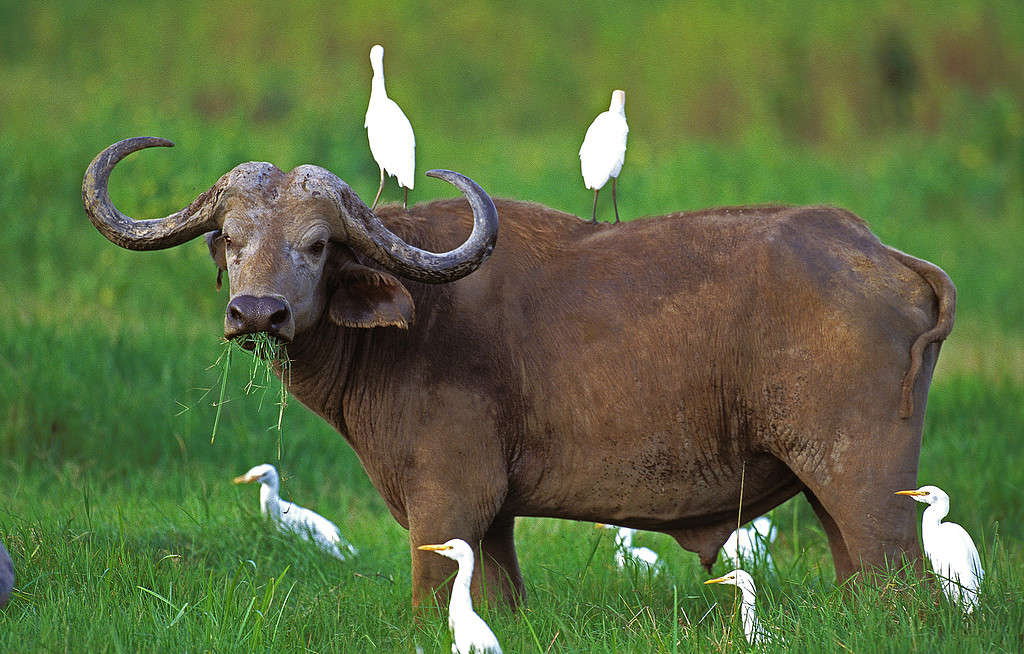
African buffalo live in herds with 50 to 500 other buffalo.
©slowmotiongli/iStock via Getty Images
There are large herds of African buffalo (also known as Cape buffalo) in Kruger National Park, generally in woodland savannas. They are large, hardy animals that measure 4 to 5 feet tall and weigh around 662 to 840 pounds. African buffalo may not be the largest animals in Kruger National Park, but they are certainly some of the most dangerous. African buffalo tend to be cranky and temperamental and can run up to nearly 40 miles per hour.
African Wild Dog (Lycaon pictus)
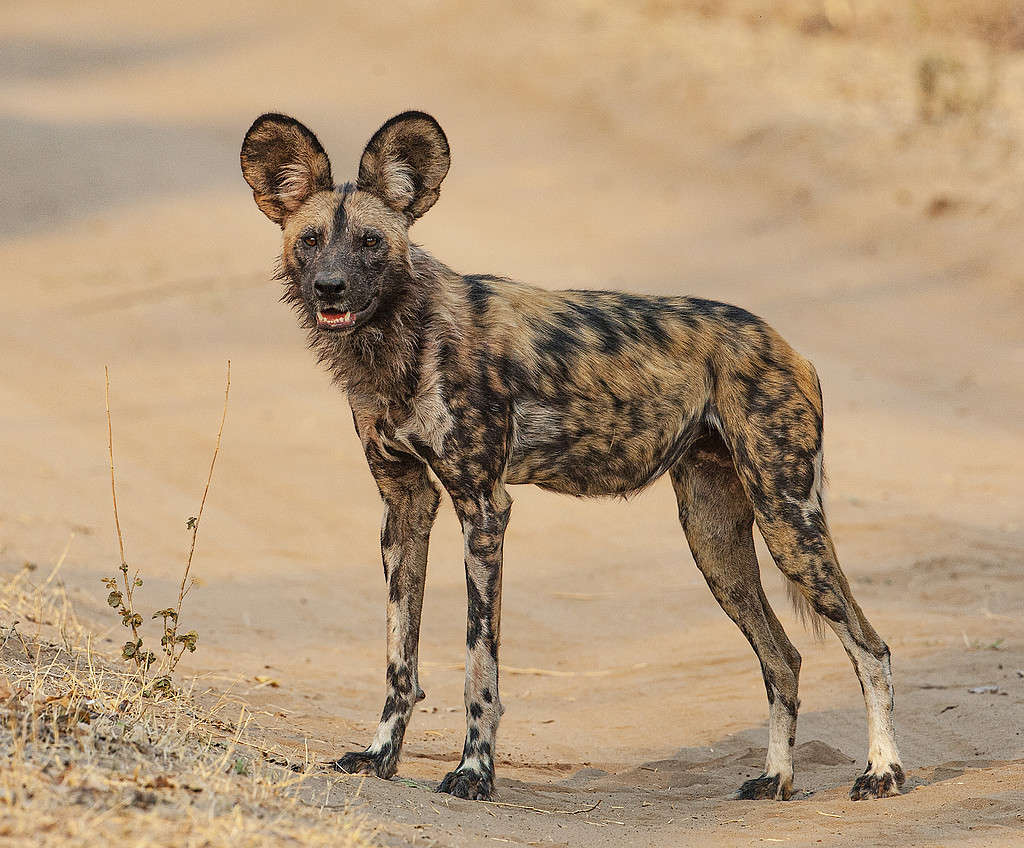
African wild dogs are also called painted dogs due to their uniquely patterned coats.
©Steve Adams/iStock via Getty Images
There are only a few populations of African wild dogs left in the wild, one of which is in Kruger National Park. Also known as painted dogs, these colorful animals are endangered, with only around 450 to 500 left in the park. African wild dogs live in highly structured social groups. They hunt together in a structured pack, much like wolves do, strategically isolating their target from the rest of the herd. They are intelligent and can run 25 miles per hour for 3-mile stretches, and 37 miles an hour over short distances.
Hippopotamus (Hippopotamus amphibious)
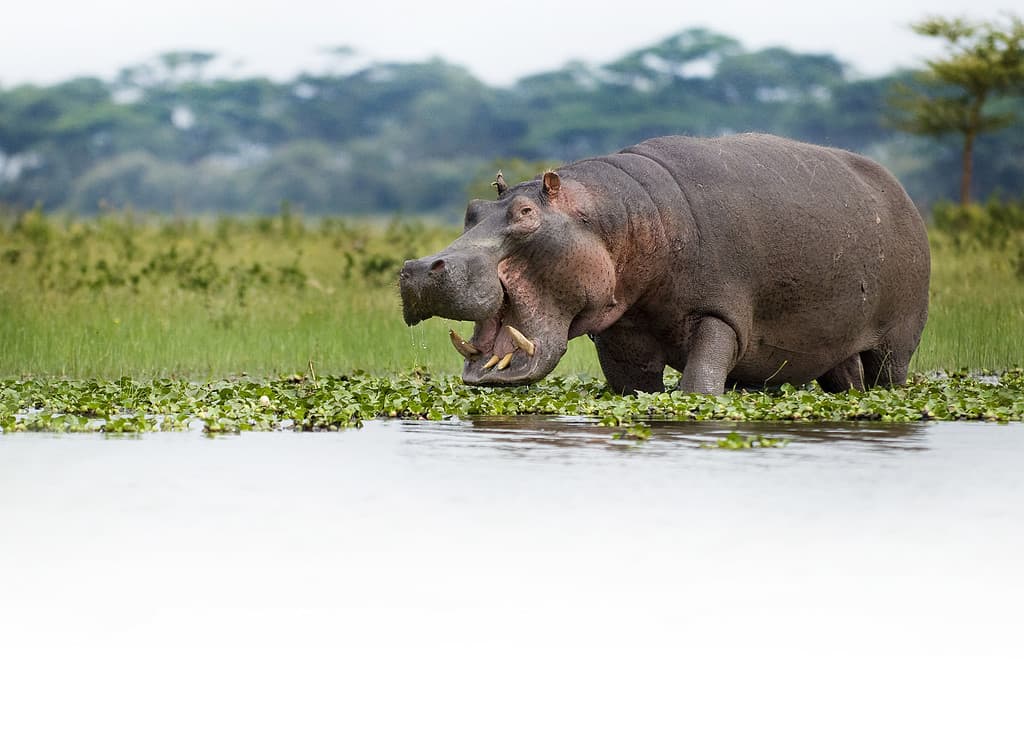
Even though hippos spend much of their lives in water, they can’t actually swim!
©TheBionicDan/ via Getty Images
Basking in lakes, waterholes, and rivers, groups of hippopotamuses are a common sight in Kruger National Park. Large groups of hippos are often spotted near the Sabie and Crocodile Rivers, although from a distance it’s easy to mistake them for a bunch of gray rocks! These semi-aquatic giants spend most of the day wallowing in the water and graze on grass and water plants at night. They may look lazy, but hippos are incredibly strong and can run up to 20 miles per hour!
Warthog (Phacochoerus africanus)
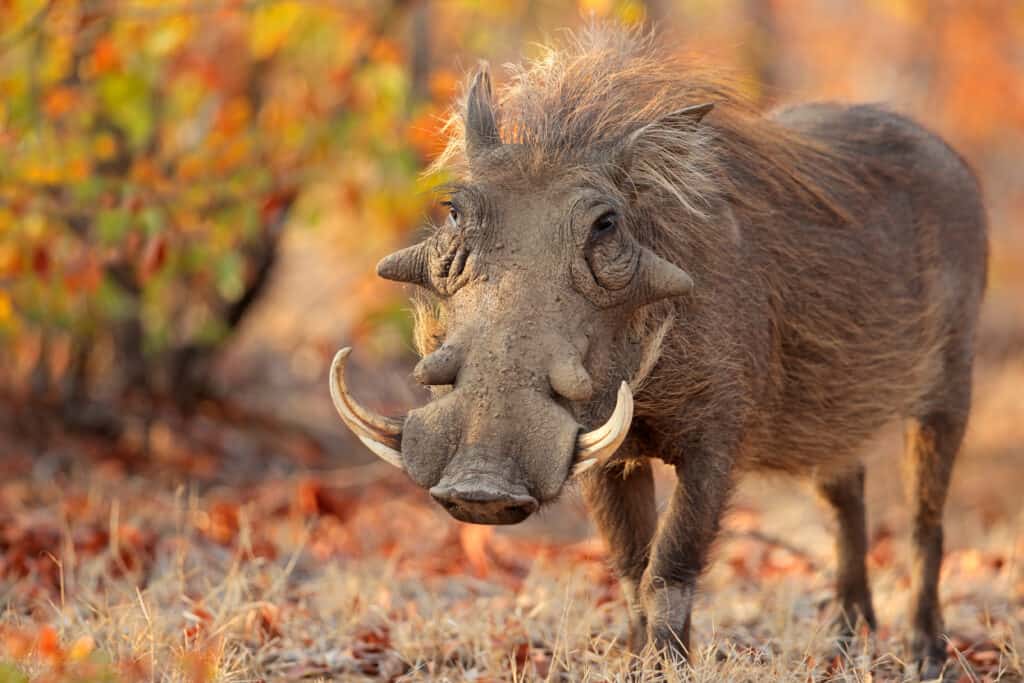
Wallowing in the mud helps warthogs to regulate their body temperature and control parasites.
©EcoPrint/Shutterstock.com
Groups of warthogs are another common sight at the watering holes of Kruger National Park. These unusual-looking pigs are active during the day and sleep in burrows at night. They are omnivores and use their large, shovel-like noses to forage for rhizomes, bulbs, and grass. They have calluses on the carpal joints of their wrists (which look like elbows to us), which allows them to kneel closer to the ground when they eat. Warthogs are also incredibly fond of wallowing in the mud.
Cheetah (Acinonyx jubatus)
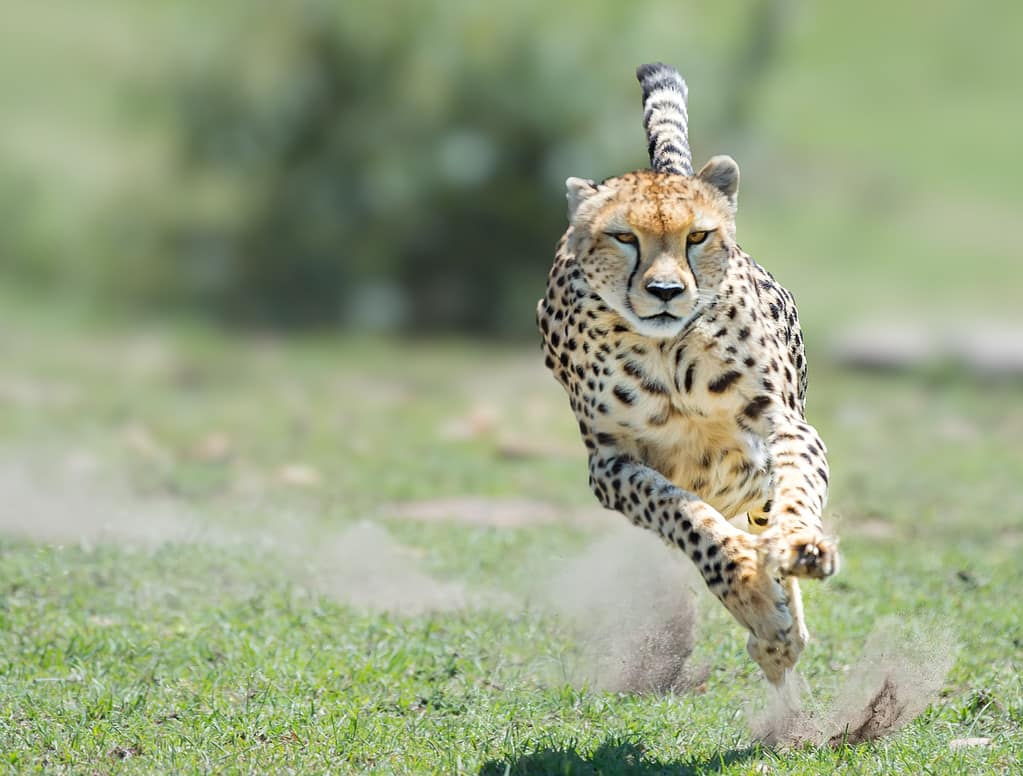
Cheetahs typically live in groups of two to six, although they may live alone at times.
©Kandfoto/iStock via Getty Images
Kruger National Park is also home to the fastest land animal on Earth, the cheetah. This speedy cat can reach speeds of up to 55 miles an hour when pursuing its prey! Cheetahs have long slender bodies, long legs, and a very long tail that provides balance when they need to turn quickly. Sadly, the cheetah population in Africa has decreased tremendously and they are rarely seen, even in Kruger National Park.
Spotted Hyena (Crocuta crocuta)
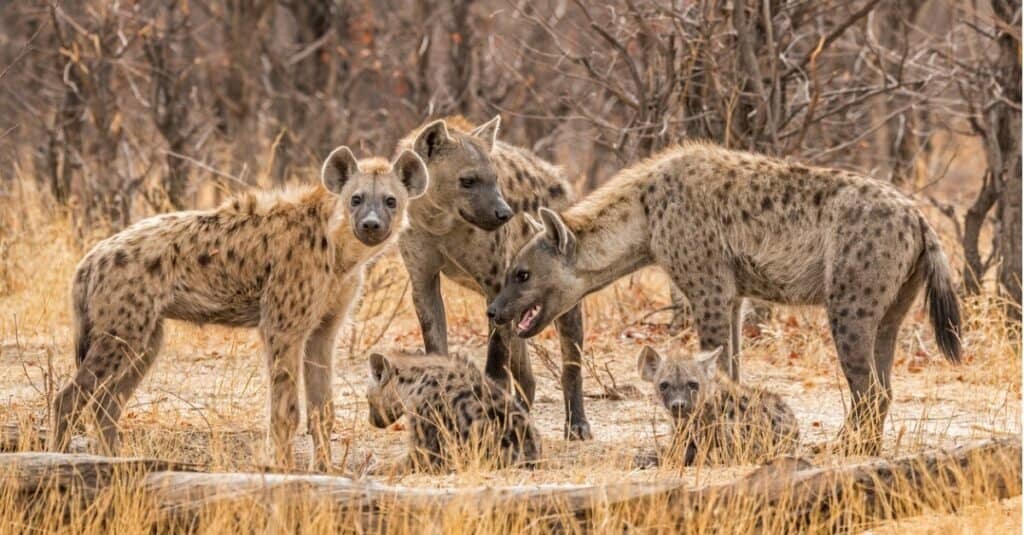
Some people call spotted hyenas “laughing hyenas” because of their unique vocalizations.
©iStock.com/Franz Schallmeiner
The spotted hyena is one of the most successful predators in the African Savanna. These unusual-looking animals have a very keen sense of smell and work together in family groups led by female hyenas. Spotted hyenas seem to prefer to scavenge for their food, but they are also incredible hunters and can pursue animals running up to 37 miles per hour.
Brown Hyena (Hyaena brunnea)
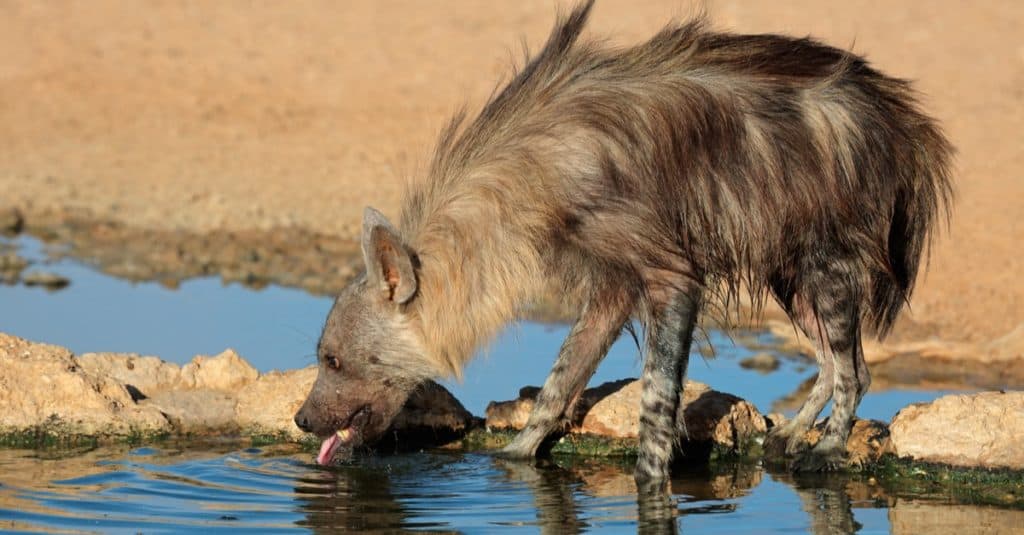
The brown hyena is the rarest species of hyena.
©EcoPrint/Shutterstock.com
Kruger National Park is home to the brown hyena. They are easy to distinguish from spotted hyenas due to their striped legs, dark shaggy coats, and light-colored manes. Brown hyenas are scavengers, but unlike the spotted hyenas, they typically live alone or in small clans. Groups of brown hyenas may work together to defend their territory, but they don’t forage together.
Black-Footed Cat (Felis nigripes)

Black-footed cats are a vulnerable species.
©slowmotiongli/Shutterstock.com
Secretive, small, and solitary, the black-footed cat is a rare species in Kruger National Park. It weighs just 2 to 4 pounds, with bold black stripes and spots. These tiny creatures look a lot like adorable housecats, but in reality, they are one of the deadliest hunters in the world! Black-footed cats have a hunting success rate of 60%. Black-footed cats can jump up to 5 feet in the air to catch birds and they often take down animals that are larger than themselves.
Marabou Stork (Leptoptilos crumeniferus)
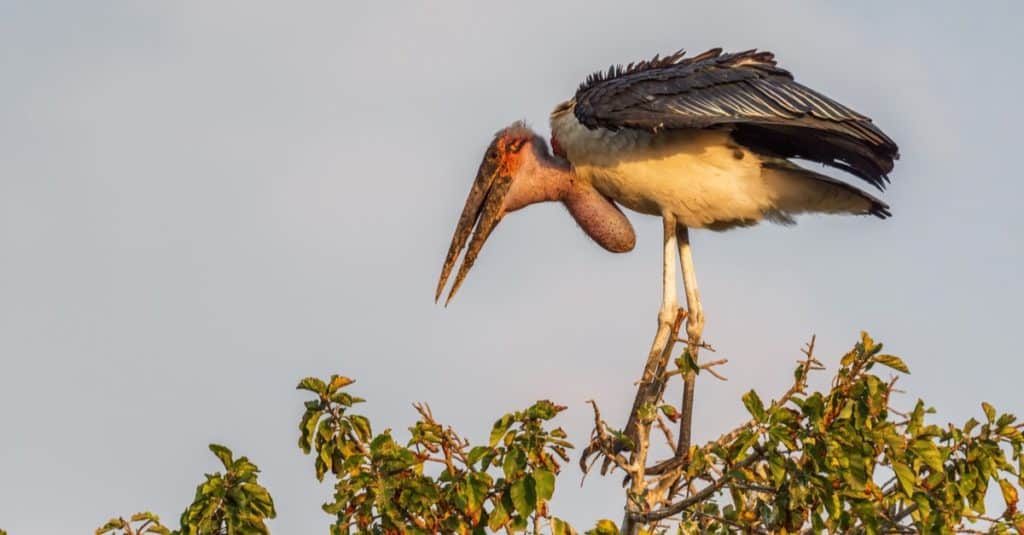
Some people call marabou storks “undertaker birds”.
©David Havel/Shutterstock.com
The marabou stork has a rather unusual appearance. It is a massive bird, standing nearly 5 feet tall, with a large body, long skinny legs, and a bald head. Marabou storks are vital to the ecosystems in Kruger National Park, serving as the cleanup crew and helping to prevent the spread of diseases. They are easygoing birds that spend much of the day standing around, but they can also fly with surprising grace.
Impala (Aepyceros melampus)
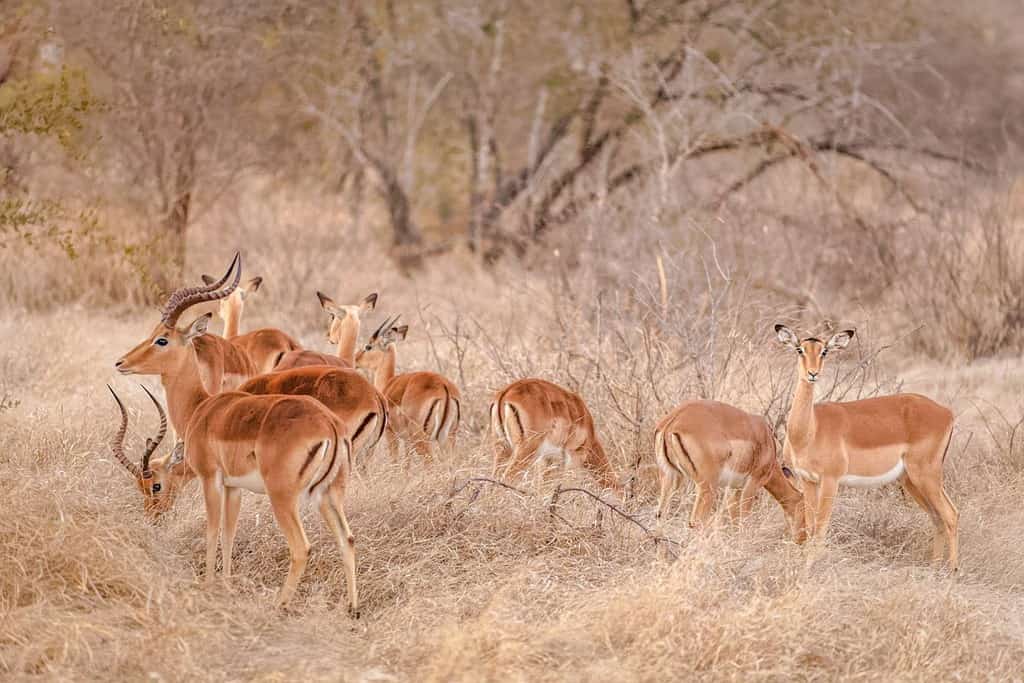
Male impala sport iconic horns.
©Gunter Nuyts/Shutterstock.com
The most common animal that you will see in Kruger National Park is the Impala. These beautiful antelope are reddish-brown with white on their bellies and a black stripe on their rumps and upper thighs. They live together in large herds and are one of the most important prey species in Kruger National Park. Impala are well-known for their incredible acrobatic abilities — they can jump 40 feet across the ground and 10 feet into the air!
Southern Ground Hornbill (Bucorvus leadbeateri)

Southern ground hornbills have surprisingly long and elegant eyelashes.
©Henk Bogaard/Shutterstock.com
Kruger National Park is home to the largest species of hornbill, the southern ground hornbill. Sadly, these enormous birds are endangered and are rarely seen outside of the park. Southern ground hornbills can grow over 3 feet tall and have sleek black feathers and crimson-red patches on their faces and neck. They also have unusually loud calls, which sound uncannily similar to a lion’s roar.
Ostrich (Struthio camelus)

Ostriches are excellent parents and diligently care for their young chicks.
©Massimo_S8/iStock via Getty Images
The ostrich is the largest bird on earth. These massive birds can grow up to 9 feet tall and weigh almost 300 pounds! Ostriches can’t fly, but they are unbelievably fast runners. However, an ostrich’s first defense is to hide, and it will often crouch low to the ground to avoid detection. But ostriches are also formidable opponents and could easily disembowel a human adult with one simple kick!
Greater Kudu (Tragelaphus strepsiceros)
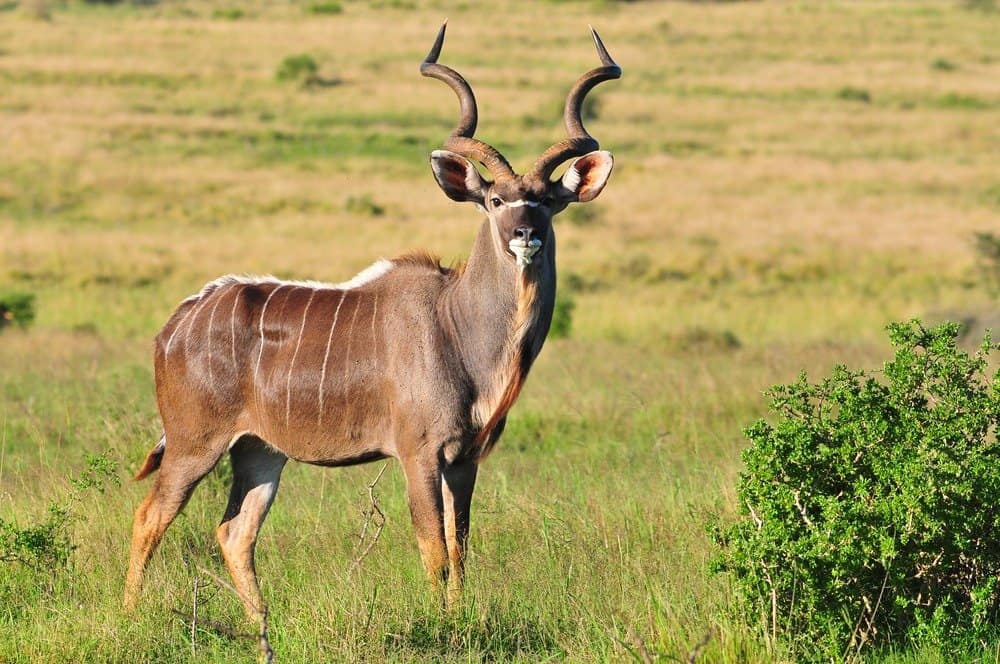
Greater kudu are larger than lesser kudu.
©Michael Potter11/Shutterstock.com
Greater kudu are another common type of antelope in Kruger National Park. Males have impressively long horns that curve into a corkscrew shape as they grow. Kudu are widely distributed throughout Kruger National Park but tend to be more common in the central regions. They have brown, bluish-gray, or reddish-brown coats with four to 12 thin vertical stripes.
Giraffe (Giraffa camelopardalis)
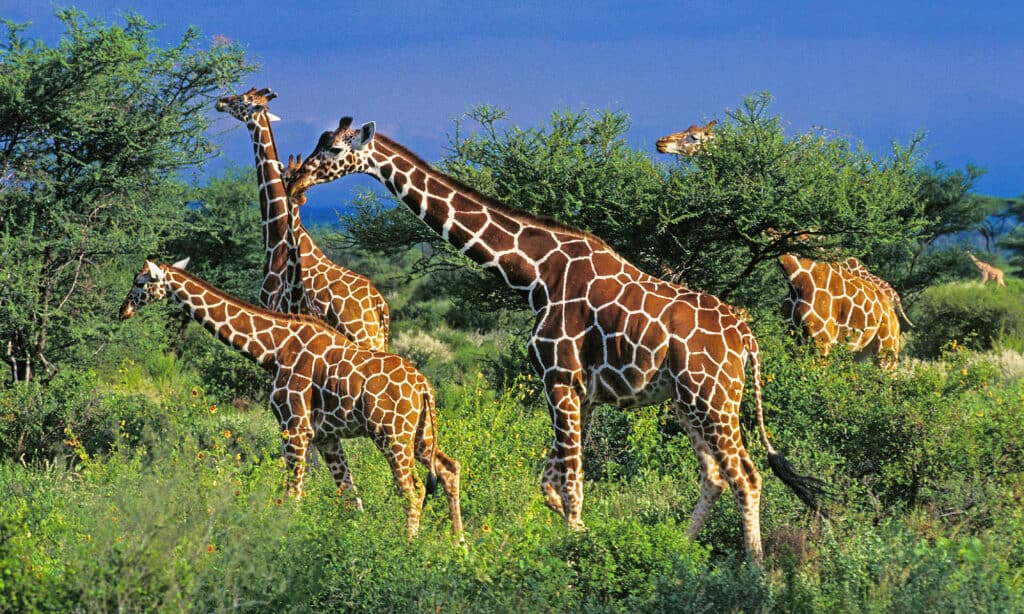
The giraffe is the tallest land animal on Earth.
©iStock.com/slowmotiongli
Giraffes often eat from the same trees as kudus, although they can reach leaves that are much higher up. These lanky creatures can grow up to 18 feet tall and have extremely long necks. Giraffes are social animals that live in herds. They are serene and quiet, but they can aggressively defend themselves when they need to.
Zebra (Equus quagga)
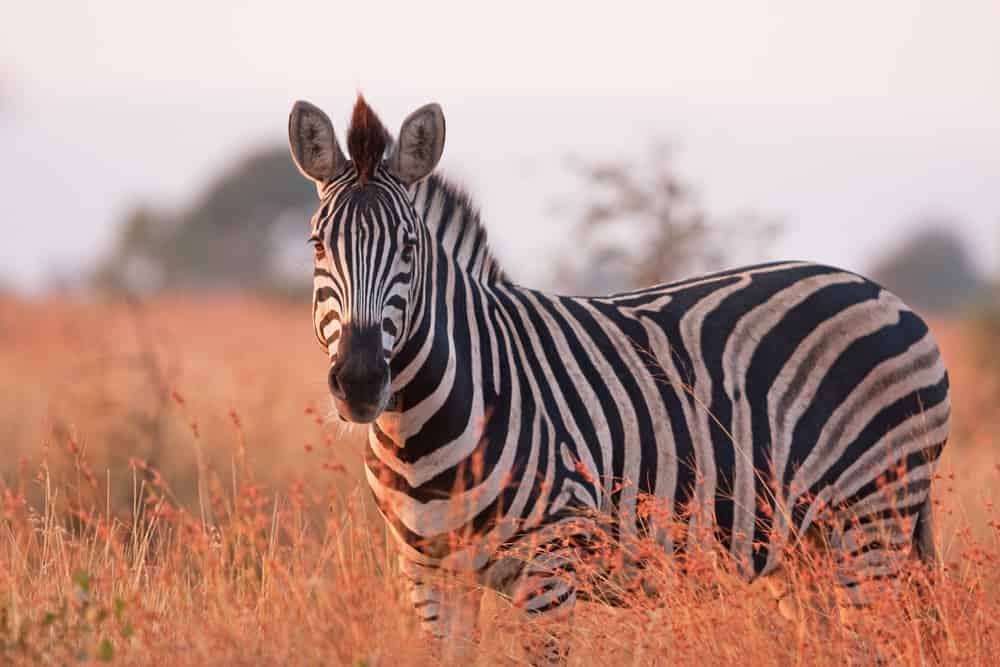
Plains zebras have thicker stripes than other species.
©Martin Prochazkacz/Shutterstock.com
Another iconic animal in Kruger National Park is the zebra. These stunning equines have bold black and white stripes and are often seen grazing together in herds. In Kruger National Park, zebras are common along the edges of woodlands and in open savannas and grasslands. The zebras in the park are Burchell’s zebras, a subspecies of the plains zebra.
The photo featured at the top of this post is © fokke baarssen/Shutterstock.com
Thank you for reading! Have some feedback for us? Contact the AZ Animals editorial team.






